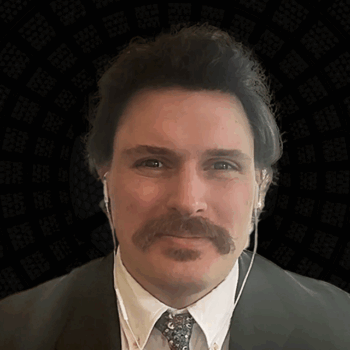Dr. Benjamin Wolozin doesn’t promise miracles. He studies decay — brain decay, Alzheimer’s, Parkinson’s, ALS—the holy trinity of neurodegeneration. At Boston University, where he is Professor of Anatomy & Neurobiology, he has seen what happens when the brain breaks down.
ALS often begins with a stumble. A foot drags. Speech falters. In three years, many patients can’t swallow. Can’t breathe. “There’s hope in a few rare genetic cases,” he says, “but most — no real treatment yet.” His company, Aquinnah Pharmaceuticals, is testing drugs, but success in animals isn’t enough. Humans differ. Time and biology refuse shortcuts.
The decay starts small — proteins that should behave start to clump, aggregate, misfire. In ALS, it’s TDP-43 in the spine. In Parkinson’s, synuclein. In Alzheimer’s, beta amyloid and tau. Wrong place, wrong form, wrong time. Each disease has the same pattern. Junk piles up in neurons. Cells die. And once a neuron dies, it’s gone.
“Think rust,” Dr. Bock suggests. “A car left by the sea corrodes. A blade left in a drawer pocks and peels. The body does the same. Rust spreads slowly. With luck and vigilance, it can be scrubbed, slowed. But not reversed.”
Inflammation is the second villain. Useful at first—cleaning wounds, restoring order. But it overstays. In the brain, the cleanup crew becomes the wrecking crew. “You want it to chew the right neurons,” he says. “Not the healthy ones. But it doesn’t always know.”
Aging makes it worse. DNA takes a million hits a day. Most get repaired, but some don’t. Mitochondria, the cell’s power plants, degrade, too. They carry their own DNA, which is also vulnerable. It’s a slow erosion from within.
Despite this, Dr. Wolozin is optimistic. New blood tests detect tau and amyloid early, years before symptoms — a giant leap from crude 1980s tests, like counting backward from 100 by sevens. “Now we can see the disease coming,” he says. “We might be able to slow it before it’s too late.”
There’s nuance, of course. Inflammation and healing live close. Kill the alarm too soon, and you leave the burglar untouched. “The key is timing,” he says. His lab works on three fronts: animal models. Lab-grown mini-brains are made from human cells. And massive human data sets from the NIH. Each helps fill in the picture.
Therapy takes years, even decades. But early markers offer a way to track progress faster, before the patient ends up like that crumbling car on the lawn.
One controversial Alzheimer’s antibody treatment shows 36% efficacy — barely. But dig deeper: 40% in men, less than 20% in women: genes and sex matter. “You can’t treat everyone the same,” he says.
On autism, he treads carefully. It’s not his field. But he recognizes overlap with schizophrenia — both involve pruning, where the brain rewires itself, cuts old connections, and forms new ones. It’s ongoing, even in adults.
Regression theories in autism? “Correlation isn’t causation,” he says. Many kids show signs as social expectations rise, around the same time vaccines are given. But data hasn’t supported vaccines as the cause. “That’s not where we’ll help most people.”
Still, he understands suspicion. “When you’re told not to look in a cabinet, you look,” Bock says. Vaccines became a sacred cow (no pun intended, the term “vaccine” emanates from vaccinia, cowpox). And sacred cows don’t belong in science.
Dr. Wolozin’s message is sober, but not hopeless. “There is progress. Diagnosis is better. Trials are underway. Scientists work for you,” he says. “We are trying.”
Discover more from Randy Bock MD PC
Subscribe to get the latest posts sent to your email.
























